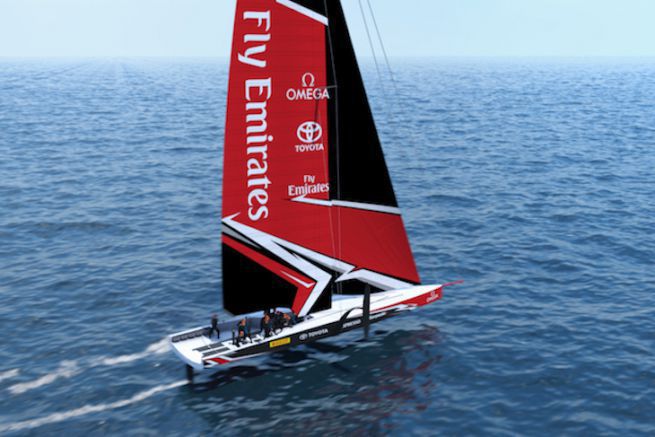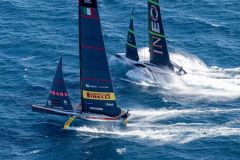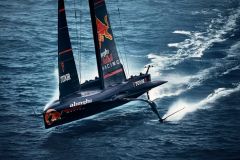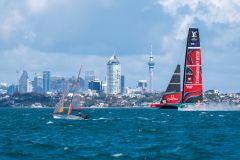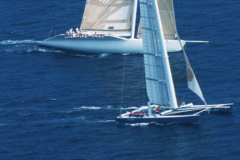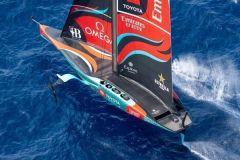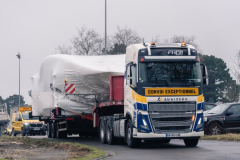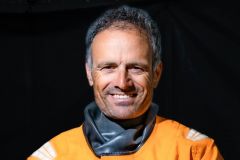Met at the 2017 Paris Boat Show, Franck Cammas gave a little more information about the future flying monohull for the next America's Cup, which will take place in 2021. The skipper was present on the stand of the motorist Suzuki which officially announced the renewal of its commitment to Team France.
Team France excited by these flying monohulls
When the New Zealanders - winners of the 35 e America's Cup - have announced the return to the monohull for the next edition of the Cup And particularly on the French side, as Franck Cammas told us. This discontent was quickly transformed into excitement at the announcement of the flying monohulls.
"I've had a lot of grumbling about this decision to go back to the monohull, but a lot less since I've seen this new boat. The New Zealanders have come up with a type of monohull that is not at all what people expected. Not with a keel, but with two large foils, a little ballasted so as not to capsize in the harbour, but capable of lifting itself completely above the water. It's a monohull that looks like a catamaran, but with a single hull. But the way of piloting this boat will be different, with technologies that will have to be used and developed to make these boats fly at very high speed and in a stable manner. It's largely at the level of what we've seen on previous occasions! It's a blank sheet of paper, and these are new technologies that we're going to have to develop. It's very exciting and it's a very good surprise!"
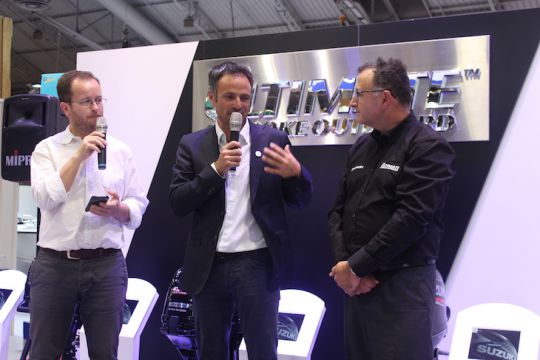
Everybody on an equal footing
With these new boats, for which we have to start from scratch, all the teams will once again be on an equal footing. "Those who don't necessarily have the experience will be at the same level as those who do. No boat sails with this concept of design and flight. We don't even know if it's going to work like we saw in the splendid computer graphics. It's going to be a real challenge for the engineers on the one hand and the sailors on the other hand who will have the chance to sail on it" explains Franck Cammas.
" It's going to be boats that fly, that are fast, that may crash and so on... It's going to give, I hope, images that live up to what the America's Cup can bring." continues the sailor.
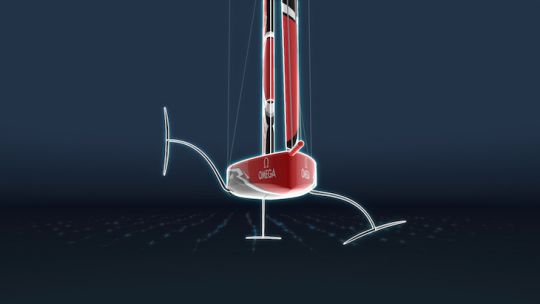
Franck Cammas explains the AC75 to us
The boat will be larger (75 feet), even wider with the foils deployed. The New Zealanders surprised everyone with this concept, which must already have been in the mind of Guillaume Verdier, an architect working with Team New Zealand, but which had never been seen until today on boats that sail. More will be known on 31st March 2018, when the rules will be revealed.
The AC75 is equipped with two large keel foils that are weighted down at the bottom of the load-bearing planes. They are 1.5 tons each and are weighted to allow the stopped boat to reach its speed, which will allow the foils to really act (as the foils only act when the boat is moving forward) and the boat to accelerate. Without this kind of weight or keel, the boat would have just capsized when stationary. In comparison, an IMOCA has a keel that weighs 3 tonnes. On the AC75, when you add up the weight of these 2 keels, we find approximately the weight of an IMOCA.
As soon as it accelerates the boat leans on the leeward foil and ends up flying, while the windward foil is retracted to avoid dragging in the water and will do some righting moment with this 1.5 tonne, very upwind. Like a trapeze crew on small boats or Moths.
As you can see from the 3D images, moving around and navigating seems easy. Turns and gybes can be made underfoil without touching the water. Like what we tried to do and succeeded on a multihull.
One of the differences with the AC Class is that there are 10 to 12 crew members on board, it is not yet defined on board. Also, the mast is not quite a wing mast but a sail that can be lowered for logistical reasons and will be more efficient in terms of aerodynamics. It won't be a real wing.
To operate the foils, one can imagine that it will be the same as on a canting keel. Since it works in much the same way, by raising and lowering the foils. So we should have a 70-foot canting keel type jack or IMOCA with a button. We can imagine using the human energy accumulated in hydraulic incubators or a battery helper, like on the IMOCA. This is likely to be the case, as we will need more energy than on the AC50s and we will probably need a little help.
